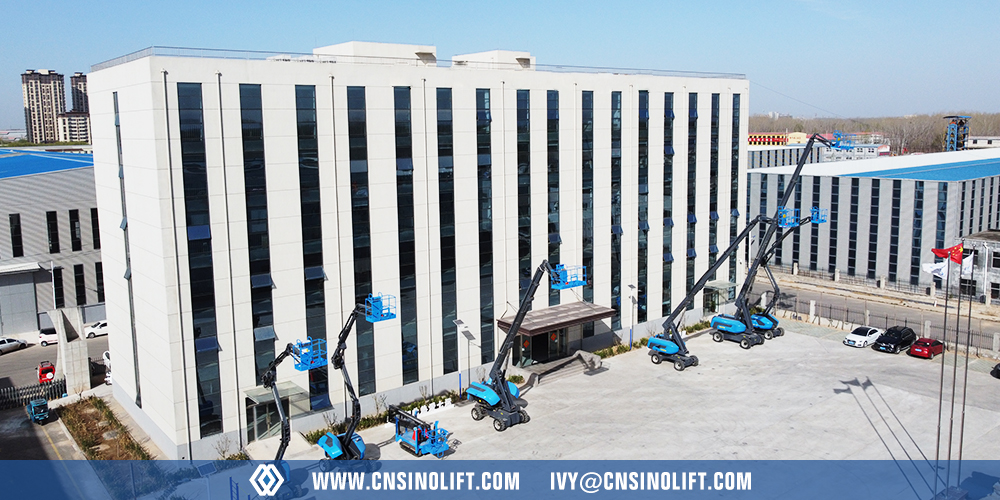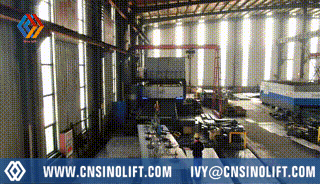Scissor lifts are among the most widely used aerial work platforms in construction, facility maintenance, warehousing, and even event setups. Their popularity comes from a simple but powerful design: the cross-brace “scissor” structure that allows the platform to rise vertically while staying stable. But as with any piece of equipment, scissor lifts have both strengths and limitations. Understanding them—and knowing when to choose the right type—can help businesses save money, improve safety, and maximize efficiency.
There are two common electric scissor lifts used in warehouses, factories, and building projects:
This distinction is important because the type of scissor lift you choose will depend not only on how high you need to work, but also on how much weight you need to carry and the ground conditions of your site.
Stability
Thanks to the scissor mechanism and wide base, these lifts are extremely stable compared to ladders or scaffolding. Workers can focus on their task without constantly worrying about balance.
Compact dimensions
Especially with self-propelled models, scissor lifts can pass through narrow aisles, standard doorways, and crowded warehouses where boom lifts simply won’t fit.
Quiet and clean operation
Electric scissor lifts run quietly with zero emissions, which is ideal for indoor projects in hospitals, cleanrooms, shopping malls, and office buildings.
Reduced setup time
Unlike scaffolding that needs to be built and dismantled, a scissor lift can be ready in minutes. Towable versions can be positioned quickly at different points of a large job site.
Cost-effective
Compared with boom lifts or rough-terrain lifts, scissor lifts are generally more affordable both in initial investment and operating cost. For tasks that only require vertical reach, they are the smarter choice.
Enhanced safety
Falls from ladders remain one of the top causes of workplace injuries. A guarded platform with enough space for workers and tools drastically reduces these risks.
Environmentally friendly
Electric power means lower carbon emissions, making scissor lifts a sustainable choice for companies that value green operations.
Restricted height
Scissor lifts max out around 20 m (65 ft). For projects requiring greater vertical or outreach access, such as façade work on tall buildings, a boom lift may be necessary.
Load capacity differences
Self-propelled lifts are limited to about 550 kg. If your work involves heavier loads, such as pallets of materials, a towable scissor lift with up to 2-ton capacity is the better choice.
Ground requirements
Most electric scissor lifts are designed for flat, solid surfaces. Uneven or soft ground requires a specialized rough-terrain or tracked model, which comes at a higher cost.
Limited runtime (electric models)
Battery-powered lifts can only run for a certain number of hours before recharging. For long outdoor shifts or continuous heavy-duty use, diesel-powered models may be more practical.
Weather and outdoor use
Electric scissor lifts are best for indoor or mild outdoor conditions. Heavy rain, snow, or strong winds may compromise their safety and performance.
When deciding whether a self-propelled or towable scissor lift is best for your project, consider these key factors:
Required height: Do you need 6 m for indoor ceiling maintenance or 18–20 m for outdoor construction?
Load capacity: Are you lifting one or two technicians with tools, or do you need to support heavy materials?
Ground conditions: Smooth warehouse floor, or uneven outdoor construction site?
Working environment: Indoor quiet operation, or long-term outdoor heavy duty?
Platform size: Will one worker fit, or do you need space for a small team and equipment?
By weighing these factors, you can select a scissor lift that balances performance, safety, and cost for your specific job.
Scissor lifts are not one-size-fits-all. Self-propelled electric models shine in compact, indoor projects where maneuverability and clean operation matter. Towable scissor lifts excel when you need extra height or weight capacity outdoors. Both, however, provide a safer, faster, and more cost-effective alternative to ladders and scaffolding.
Making a wise choice means understanding your project requirements—height, weight, terrain, and environment—before investing. Done right, a scissor lift can pay for itself quickly in saved labor time, improved safety, and reduced downtime.

